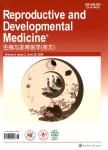Effects of changing the control ovarian stimulation protocol in patients without a transplantable embryo in the previous in vitro fertilization/intracytoplasmic sperm injection cycle
Effects of changing the control ovarian stimulation protocol in patients without a transplantable embryo in the previous in vitro fertilization/intracytoplasmic sperm injection cycle作者机构:Guangxi Reproductive Medical CenterThe First Affiliated Hospital of Guangxi Medical UniversityNanning 530021China Reproductive Medicine CenterAffiliated Hospital of Guilin Medical UniversityGuilin 541001China Reproductive Medicine CenterLiuzhou Maternity and Child Healthcare Hospital Liuzhou 545001China
出 版 物:《Reproductive and Developmental Medicine》 (生殖与发育医学(英文版))
年 卷 期:2023年第7卷第4期
页 面:218-223页
核心收录:
学科分类:1002[医学-临床医学] 100211[医学-妇产科学] 10[医学]
基 金:grants to W.H.M.from the National Natural Science Foundation of China(81860160) M.J.L.from Guangxi Key Research and Development Program(No.AB20238002) Y.H.Y.from the National Natural Science Foundation of China(81871172) the Natural Science Foundation of Guangxi Zhuang Autonomous Region(2019GXNSFFA245013,2018GXNSFDA050017) the Guangxi Medical University Training Program for Distinguished Young Scholars and the Special Fund of the Female Fertility Preservation Innovation Team of the First Affiliated Hospital of Guangxi Medical University
主 题:GnRH agonist GnRH antagonist Transplantable embryo Pregnancy rate Live birth rate
摘 要:Objective:Some patients fail to obtain an embryo for transplantation during previousin vitro fertilization(IVF)or intracytoplasmic sperm injection(ICSI)cycles,and require multiple reproductive *** study aimed to evaluate whether changing the control ovarian stimulation(COS)protocol during the subsequent stimulation cycle could improve laboratory and clinical outcomes in these ***:Patients without a transplantable embryo(TE)in the previous IVF/ICSI cycles were recruited during their second *** were classified into two groups according to their first cycle protocol:Group A,patients treated with a gonadotropinreleasing hormone agonist(GnRH-a),and Group B,patients treated with a gonadotropin-releasing hormone antagonist(GnRH-ant).The study group included patients whose stimulation protocols were changed,whereas the control group consisted of patients who used the same stimulation protocol in the second *** then compared the numbers of oocytes collected(OC)and TE,the incidence of non-TE,the pregnancy rate(PR),and the live birth rate(LBR).Results:In Group A,the numbers of OC and TE were significantly lower(6.0±4.7vs.9.4±6.4,2.3±2.2vs.4.5±3.8,P0.05)in the study group compared with those in the control *** Group B,the numbers of OC and TE were higher(7.0±5.5vs.4.0±4.3,3.5±3.4vs.1.8±2.1,P0.05)in the study *** was a significant increase in the incidence of non-TE(adjusted odds ratio(AOR)=2.12,95%CI:1.04–4.69)of the study group in Group A but not in Group *** significant differences in the PR or LBR were found between the study and control groups in either Group A or ***:Changing the COS protocol from GnRH-ant to GnRH-a or continuing the GnRH-a protocol can improve laboratory outcomes in patients with no TE in the previous IVF/ICSI cycle.



